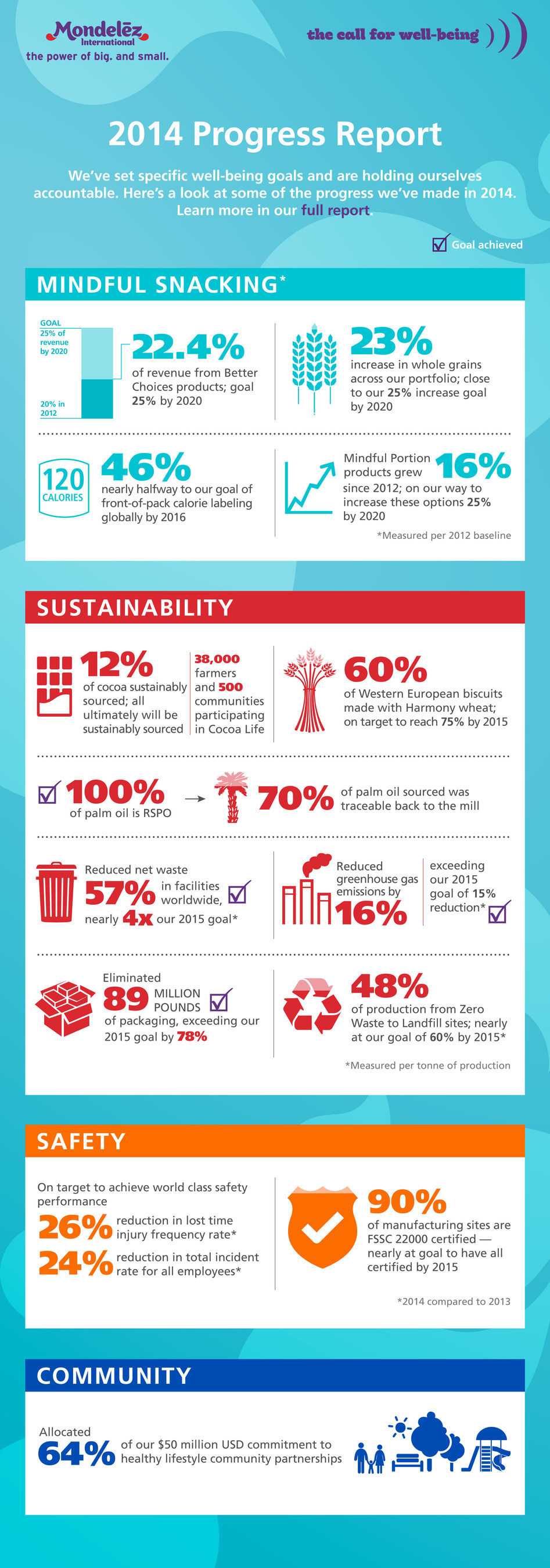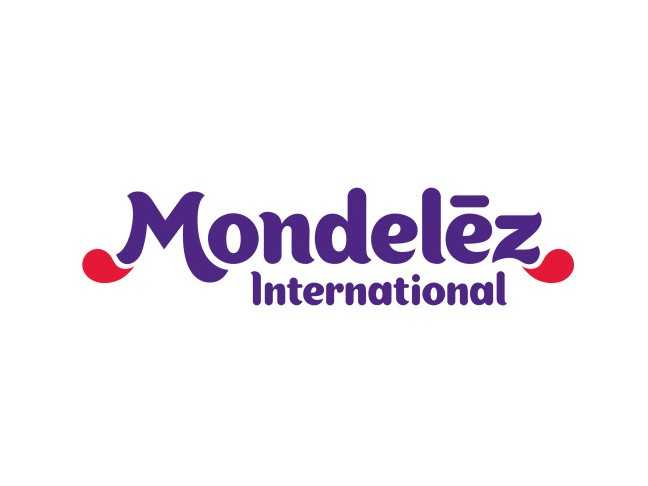Mondelez International published yesterday its Call For Well-being 2014 Progress Report. The report details how the company exceeded many key environmental goals and took significant steps forward to meet its remaining global well-being targets by 2020.
“We firmly believe that we can grow our business, while improving the well-being of the planet. Through our Call For Well-being, we bring a business mindset and the power of our global resources together to drive change,” said Irene Rosenfeld, Chairman and CEO.
“We’ve made important progress against key metrics to reduce our environmental footprint, evolve the nutrition profile of our portfolio and secure sustainable agriculture supplies. Working together with employees, partners and suppliers, we can deliver enduring solutions for our business and society.”
Launched in 2013, the company’s Call For Well-being is focused on four areas that are critical to the well-being of the world and where Mondelez International can make the greatest impact: sustainability, mindful snacking, safety and community.
Over the last year, the company has scaled its agricultural commodity sourcing programs, reduced its environmental footprint, increased portion control options to help consumers snack mindfully and united community partners, suppliers and employees to help drive positive change locally and globally.

Following are key highlights of the company’s progress toward achieving its goals:
Sustainability
• Exceeded goal to reduce manufacturing waste by 15 percent by 2015. Through 2014, there was a 57 percent reduction – four times the original goal.
• Achieved goal to reduce greenhouse gases by 15 percent in manufacturing – a year ahead of schedule.
• Eliminated 89 million pounds of packaging – nearly doubling the original target of 50 million pounds by the end of 2015.
• Met goal of having 100 percent of palm oil be RSPO (Roundtable on Sustainable Palm Oil) – two years ahead of commitment. At end of 2014, 70 percent of the palm oil Mondelez International sourced was traceable back to the mill.
• On target to sustainably source key commodities. At the end of 2014, 12 percent of cocoa, 61 percent of coffee and 60 percent of our Western European biscuits were sustainably sourced.
• More improvement is needed to reach goals of reducing water and energy use in manufacturing by 15 percent by end of 2015. At end of 2014, incoming water usage decreased by 10 percent per tonne of product; manufacturing sites worldwide reduced energy per tonne by 7 percent.
Mindful Snacking
• On target to deliver 25 percent of revenue from Better Choice products by 2020. In 2014, 22.4 percent of revenue was from Better Choice options, which meet a stricter set of nutrition criteria.
• On target to increase individually wrapped portion control options 25 percent by 2020. Since 2012, Mindful Portion products grew by 16 percent.
• Making progress on nutrient targets. Since 2012, increased whole grains by 23 percent across the portfolio, and on target to achieve 25 percent increase in whole grains by 2020. On track to meet sodium reduction goal of 10 percent by 2020, having reduced sodium by 2 percent across global portfolio since 2012. More work is needed to reach goal to reduce saturated fat by 10 percent by 2020. At end of 2014, saturated fat declined across entire portfolio by 1 percent.
• Strengthened its marketing to children policy. Starting in 2016, will no longer advertise products directly to children under age 12, irrespective of the product’s nutritional profile.
Safety
• On target to achieve world-class safety performance. In 2014, compared to 2013, achieved 26 percent reduction in lost time injury frequency rate and a 24 percent reduction in Total Incident Rate for all employees in manufacturing.
• On target to achieve FSSC 22000 (Food System Safety Certification) for all internal manufacturing facilities by 2015. In 2014, 90 percent of manufacturing sites were certified.
Communities
- On target to meet goal to invest $50 million in healthy lifestyle community partnerships. In 2014, allocated over $30 million (64 percent) to programs across 13 countries.
To read an at-a-glance summary, please visit: http://bit.ly/1Awya3C. For the full report, please visit: http://bit.ly/1LEaFq7.


















